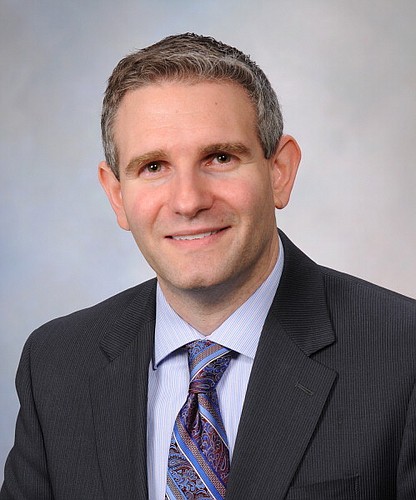
Similar to how groceries, Amazon orders and takeout meals can be home delivered, experts say health care is the next service to be easily accessed without leaving the house.
Mayo Clinic launched its home health care program in June in Jacksonville and Eau Claire, Wisconsin. Since then, 150 patients have been enrolled.
Through the program, patients can receive the care they would in the hospital at home through virtual doctor visits.
Hospital patients who are sick enough to be in the hospital but don’t require more intensive care or procedures are ideal candidates, said Dr. Michael Maniaci, Mayo Clinic Florida’s lead for the program.
“I truly believe that over the next couple of years it will be the expectation of patients,” Maniaci said.
He said patients will continue hospital care for a major surgery or procedure, “but the little things or everyday illness, they’ll expect to be cared for at home.”
Patients in the program are monitored for 30 days from home. In that time, they receive telehealth care from a Mayo Clinic doctor, who can examine them on video and see their vital signs from instruments that are sent home with the patient.
Home health patients receive a blood pressure cuff, pulse oximeter, scale, Wi-Fi-enabled phone, emergency button and a backup power pack that lasts 72 hours in the event of a power outage.
They also receive a tablet to use to speak with a doctor or nurse.
About 95% of patients enrolled in the program are age 65 or older. Many are general medicine patients with conditions like heart failure, COPD, infections or pneumonia.
Maniaci said many patients agree to the program because of its convenience and because it allows them to recover at home instead of in the hospital, where they often are sedentary and waiting for care.
“When you look at studies of people in the hospital, they are up out of bed less than two hours a day,” he said.
“With our patients at home, they’re up 8, 9, 10 hours a day. They like that mobility. They feel like they’re getting better faster.”
With advancements in technology, it will become easier to treat more patients from their homes, he said.
One day, it could be possible to aggregate health data from smart watches, home cameras and virtual voice assistants like Alexa and send it to someone’s medical provider to receive information on their well-being without leaving the house or bringing extra medical instruments to them.
“If we properly feed that into something that can do artificial intelligence and data analytics, we can predict who is going to get ill, who is getting ill, what they’re doing and how we can get them better quickly,” Maniaci said.
“That’s something that doesn’t exist now.”
Telemedicine becoming mainstream
Since the onset of the pandemic a year ago, consumers are seeing doctors virtually more frequently.
Telescope Health founders Dr. Matthew Rill and Dr. Matthew Thompson said in the coming years they expect people to turn to virtual care first before considering an in-person visit.
“I do think we’re going to get to a point ... they’ll use their phone as a resource,” Rill said.
Rill said the company saw an influx in telemedicine users last spring and summer.
He said that while that has plateaued, home health providers and long-term care facilities are more interested in using the service.
Thompson said the service is especially useful overnight, when nursing homes don’t have a doctor on call for patients to see.
“This is another way to bridge that gap and prevent inappropriate spending when there doesn’t need to be a transfer, some kind of costly workout,” Thompson said.
It also is supporting Baptist Health’s HealthPlace app, which allows users to speak virtually with a doctor.
“When people do connect, they tend to use it again and tell their friends,” Rill said.
“I still think that there’s some barrier to entry in awareness that it exists, and that it’s as easy as it is.”
In Florida, there are additional barriers for the growth of telemedicine. Many insurers don’t cover telehealth visits.
Thompson said there’s no legislation in Florida that requires insurance companies to bill telehealth visits and in-person visits equally.
“There’s certainly a lot of movement and a push for Florida to adopt that but we’re not there yet,” Thompson said.